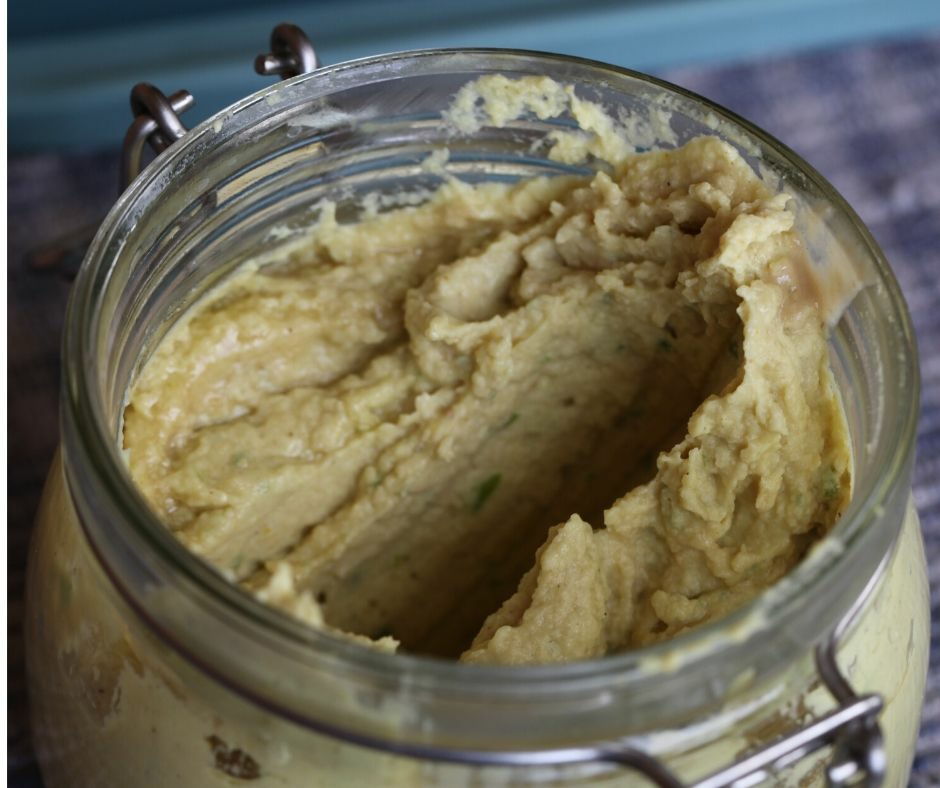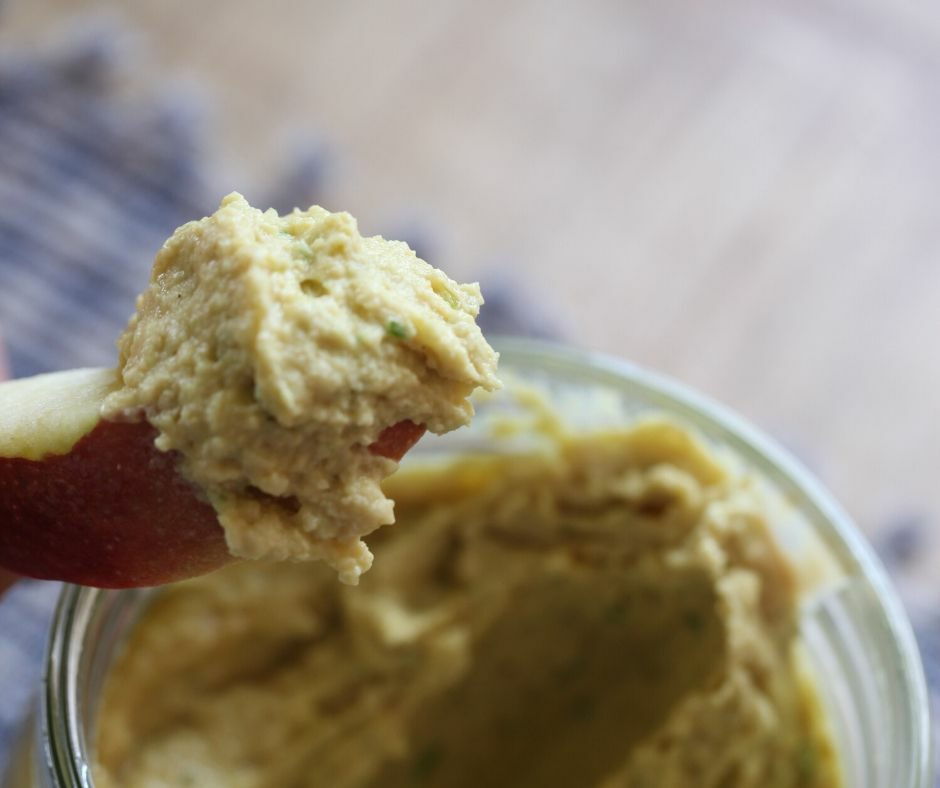Chickpeas are certainly one of the best-known legumes, however, research and statistical data on the consumption of legumes by Italians are not encouraging at all: legumes are less and less frequent on our tables and this is a pity!
Why consume more legumes?

Chickpea hummus: a tasty idea to eat more legumes!
Legumes are very important allies of a balanced diet, a real treasure trove of macro and micronutrients. Regular consumption of this precious food should be encouraged and promoted at least three or four times a week. In nutrition, the edible seeds of plants belonging to the legume families are called legumes. The most common ones are beans, peas, lentils, chickpeas, broad beans, soybeans.
Botanically they all have one thing in common: the seeds are contained within a fruit called a pod, which has the appearance of a fibrous envelope. The consumption of dried legumes went from 13 kg per head in the second half of the 19th century to the current 5 kg per head, of which 60% canned, 30% frozen and only 10% fresh.
Legumes can be eaten both fresh (collected while still young and eaten with the whole pod, such as green beans and fresh fava beans, to be consumed after cooking to eliminate some "anti-nutritional" substances) and dried (seeds of the leguminous joints when fully ripe). Canned legumes are dried legumes boiled and canned to be ready for consumption. Be careful to always read the ingredients to verify that no salt and / or sugar and additives have been added!
For dried legumes, we recommend soaking in cold water for several hours or overnight. Only water without baking soda or salt. During soaking, seed germination occurs, which makes certain vitamins and minerals more available and the elimination of many anti-nutritional substances. Soaking also softens the seed by shortening the subsequent cooking time. Cooking must be complete (legumes must be soft), therefore we recommend the use of a pressure cooker to further reduce the cooking time. Unlike soaking water, cooking water can be consumed, for example in soups and soups, or whipped with a mixer to make vegan leavened products.
Legumes properties
Taking into consideration 100g of legumes we see that the calories are about 350 Kcal, of which 25% are proteins, the lipids are few (and polyunsaturated), therefore of excellent quality, while 30% is composed of starch and simple sugars, which they give their sweet taste. The fiber is present for 20-30%, therefore legumes are an excellent source of dietary fiber, also because it is present both in a soluble and insoluble form.
Dietary fibers help us keep the intestinal tract healthy, fight constipation, avoid blood sugar and insulin peaks, increase satiety, control cholesterol, triglycerides, and blood pressure. Thanks to the high presence of fiber, legumes have a very low glycemic index (20-30), which increases if the legumes are overcooked and/or reduced to a puree.
Proteins are a good percentage and have an excellent amino acid profile, except for the scarcity of the phosphorylated amino acids, methionine, and cysteine, of which however cereals are rich. Therefore, to complete the amino acid pool, it is always highly recommended to combine legumes and whole grains in a proportion of 1 to 3.
Micronutrients of legumes
Legumes are rich in fat-soluble vitamins and represent an excellent source of B vitamins, in particular folate, vitamins B1, B2, B6. So much so that, for example, with 100g of chickpeas we cover 35% of the daily requirement of vitamin B1.
They are also food sources of a precious mineral, iron, contained in truly remarkable percentages. Magnesium intake is also considerable, as is potassium. Sodium compared to potassium is up to 200 times lower, so legumes are food that helps us rebalance the sodium-potassium ratio, which in our diet tends to be unbalanced in favor of sodium. There are also zinc, copper, selenium, and manganese.
Are legumes toxic?
Given the presence of some substances, legumes are the subject of controversies in the field of nutrition. Some of the theses supported by those who are against the consumption of legumes are the following:
- Phytic acid reduces the absorption of some minerals
- Protease inhibitors reduce the absorption of proteins
- High-dose lectins damage red blood cells causing agglutination
- High-dose saponins damage red blood cells causing hemolysis
It is good to consider that most of these substances are eliminated during soaking, especially if the water is changed a couple of times, as well as during cooking itself. What remains are traces, and the percentage is not so worrying. Furthermore, many "anti-nutritional" elements have recognized beneficial effects. For example, saponins are cholesterol-lowering because they block the absorption of bile salts. Phytic acid, on the other hand, is protective for colon cancer because it can chelate toxic and radioactive substances. A separate note for lentils, not recommended in case of hyperuricemia because they contain many purines and for fava beans, in the case of favism.
Do legumes swell the belly?
Annoying abdominal bloating and flatulence following the consumption of legumes are known.
This occurs because in the legumes there are three particular oligosaccharides, raffinose, stachyose, and verbascose, which are not digestible and once they reach the colon they are fermented by bacteria producing gas. However, this only negatively impacts if you are not used to eating legumes and you only consume them one-off. The solution is to train our digestion to consume them!
Otherwise, these oligosaccharides reach a population of bacteria that is not accustomed to receiving and using them. Those who are used to consuming them regularly do not have these annoying problems because they have selected the proper intestinal microflora. How to do? Start to increase their consumption gradually, in the form of puree (as in the case of hummus) or chew them well, and then keep their consumption constant over time.
Chickpea hummus light recipe

Today's recipe is extremely quick and easy to make. Let's see how to prepare an excellent chickpeas hummus at home without additives and preservatives. It is a protein-rich recipe perfect for a light aperitif, to dress our salads or to spread on whole-wheat bread. A highly satiating snack when accompanied by fruit or vegetables, such as apple or celery wedges and fennel.
Ingredients
- 240g cooked chickpeas well washed and drained
- 1 tbsp Tahina (20g)
- Juice of 1 lemon
- 20ml water
- Parsley or chives
- Pepper
- Salt
- Cumin
Method
- Place all the ingredients in a blender. Mix until a puree without lumps is obtained.
- Be careful not to put more water than necessary otherwise the hummus will have a too liquid consistency.
- Place in an airtight container.
Macros for the whole recipe:
C 33g, P 54g, F 14g
Conclusions
Chickpea hummus is a recipe to be replicated frequently. In this way, we will get used to eating legumes more often, which we have seen to be a very precious and beneficial food for our health. Also, we will train our colon to manage this food source without experiencing annoying abdominal swelling.
Online sources
- https://www.healthline.com/nutrition/legumes-good-or-bad
- https://www.britannica.com/science/legume
- https://daa.asn.au/smart-eating-for-you/smart-eating-fast-facts/food-and-food-products/legumes-what-are-they-and-how-can-i-use-them/
- https://www.mayoclinic.org/healthy-lifestyle/nutrition-and-healthy-eating/in-depth/legumes/art-20044278
